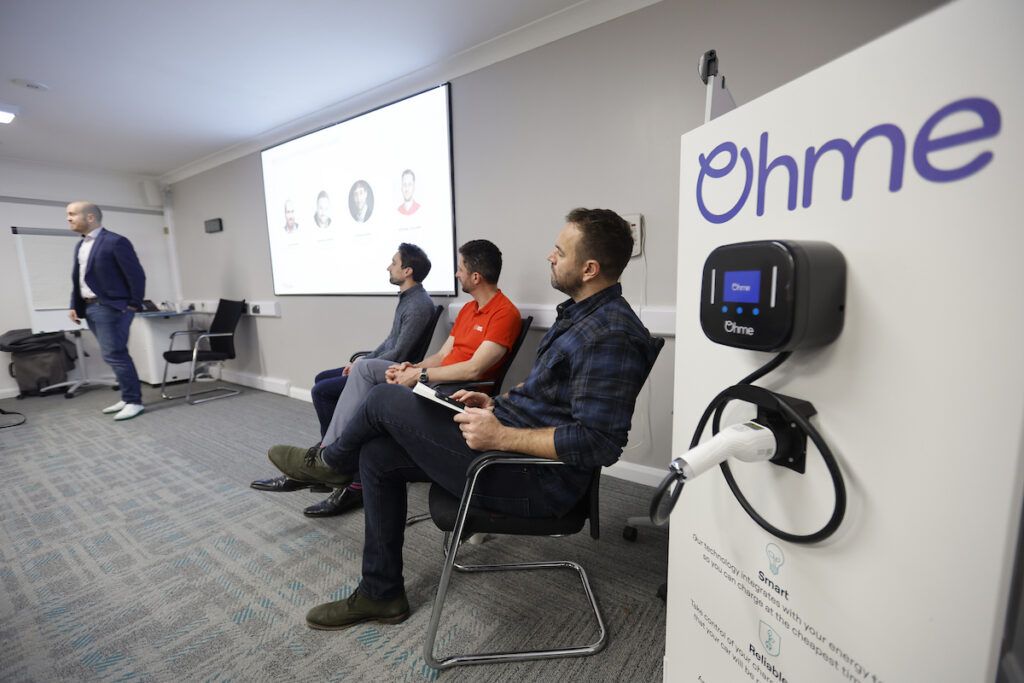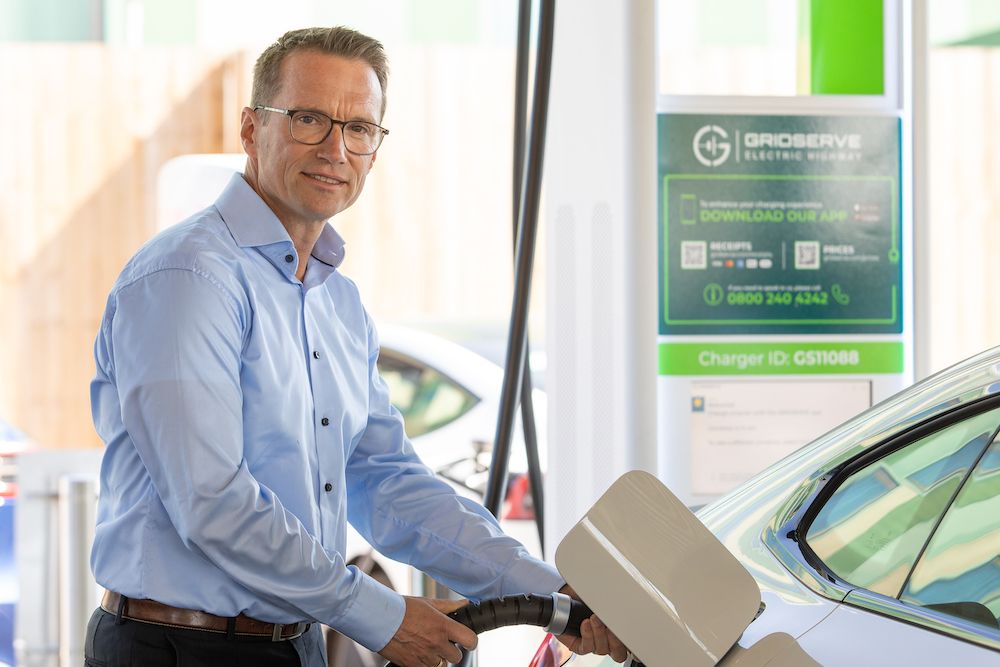Transport + Energy spoke to Mike Nugent, Chief Revenue Officer at Hitachi ZeroCarbon, about the company and its plans for the decarbonisation of fleets.
How do you see the fleet space changing in the next five years?
“The fleet industry is on the cusp of a major transformation, with the next five years set to be defined by the accelerating shift towards electrification. But this evolution goes far beyond simply replacing diesel vehicles with electric alternatives. It’s about reimagining the fleet as a core component of an organization’s long-term energy and sustainability strategy.
“To stay ahead, fleet operators will need to adopt a more holistic view, considering everything from energy optimization and infrastructure planning to grid integration. Data will be central to this shift, enabling smarter decision-making, streamlining
operations, and even creating new revenue streams through areas like energy trading and load balancing.
“One of the most profound changes will be how we think about batteries. No longer just a vehicle component, batteries will increasingly be seen as strategic assets, capable of generating value throughout and beyond their primary use.
“As policy frameworks continue to evolve, agility will be critical. The organizations that move quickly, adapt to regulatory changes and align electrification efforts with broader business objectives will be best positioned to lead in this rapidly changing landscape.”
What are the biggest challenges for fleet operators in the UK – and how can these issues be overcome?
“The UK was one of the first major economies to commit to net-zero targets, putting fleet operators under increasing pressure to decarbonize their vehicles by the 2040 deadline. With just 15 years to go, the clock is ticking, and businesses must begin their transition now. This includes not only upgrading vehicle fleets but also investing in the right infrastructure and charging facilities to support full electrification, all while minimizing disruption to operations.
“Yet the transition is far from straightforward. Rapid changes in technology, policy, and market expectations create uncertainty, making long-term planning difficult. To overcome these challenges, operators need a flexible, forward-looking energy strategy that extends beyond replacing diesel engines. Embracing data is essential, not just to optimize fleet performance, but to unlock new opportunities, such as energy trading or second-life battery use.
“Most importantly, electrification should be seen as a business opportunity, not just a compliance requirement. Fleets that innovate, adapt quickly, and align with broader sustainability goals will be best placed to succeed in a rapidly evolving landscape.”
What, specifically relation to the area of fleet electrification, would you like to see from the UK Government and local government in terms of policy within the next five years?
“Looking ahead, one of the most critical roles for the UK Government and local authorities in supporting fleet electrification is providing clear, stable and long-term policy direction. In recent years, shifting targets and investments have made it difficult for fleet operators to plan with confidence. There’s even been some cases where early adopters of electrification have found themselves misaligned with newer incentives or evolving regulations.
“To avoid this, national and local policymakers must work together to deliver coordinated, cross-party commitments that extend beyond political cycles. This means setting transparent, predictable regulations around emissions standards, infrastructure funding, vehicle incentives and grid readiness. When businesses can trust that today’s investment decisions will remain viable in the years ahead, they’re far more likely to commit to large-scale electrification.
“Ultimately, a stable policy environment isn’t just a nice-to-have, it’s the foundation for long-term strategy, innovation and infrastructure planning. By fostering regulatory consistency, governments can empower both large and small fleets to make bold, future-proof choices that support the UK’s wider net-zero ambitions.”
What are some of the common cost challenges experienced in this space and how can they be overcome?
“One of the most significant cost barriers for businesses transitioning to electric vehicles is the high upfront investment. This includes not only the vehicles themselves, particularly those with large battery capacities, but also the infrastructure required to support them.
“Depot-based charging, where fleets install charging stations at their own facilities, is often seen as the default approach. While it offers efficiency and control, it also comes with design and logistical challenges. Many depots require substantial reconfiguration to allow for accessible and safe charging, especially for larger fleets like HGVs. This might involve installing drive-through or reverse-in bays, or creating one-way systems to improve flow and reduce downtime.
“To overcome these infrastructure costs, businesses are increasingly exploring shared charging models. In this setup, one organisation hosts charging infrastructure that multiple fleets can access under pre-agreed terms. This approach reduces the upfront costs for individual businesses, speeds up deployment and improve charger efficiency.
“By thinking collaboratively and strategically about infrastructure, fleet operators can significantly lower the financial barriers to electrification, making the transition more achievable and sustainable in the long term.”
What are the financial and operational benefits that can be brought about through operating a fleet of decarbonised HGVs?
“Decarbonizing HGV fleets isn’t just about reducing emissions; it also unlocks tangible financial and operational advantages. Electrified HGVs can deliver long-term cost savings through lower fuel and maintenance costs, improved vehicle uptime,and compliance with tightening emissions regulations. For fleet operators, this translates into more predictable running costs and a lower total cost of ownership over time.
“There are also significant opportunities to generate new revenue and boost that it can turn its unused depots into shared charging facilities during operational downtime. After discovering that its facilities were mostly unused during the hours of 8am and 8pm, it’s enabled select partners to use its infrastructure – turning this into a profit-generating asset.
“Projects like GRIDSERVE’s Electric Freightway are helping HGV operators to understand the opportunities that accompany electrification. By fostering collaboration between operators, service providers and the government, it is educating the eco-system, building the right infrastructure and proving the viability of an eHGV network. A mature ecosystem ensures that fleet operators are better positioned to scale electrification while offsetting capital expenditure and improving their efficiency.”
What were the key things that you took away from the Fleet Electrification Forum and how do you plan on implementing them into the business?
“The key thing I noticed was the significant enthusiasm for the coming wave of electrification in the eHGV space and a real hunger for knowledge on how best to deliver decarbonisation over the coming years. There was also a considerable recognition of the challenges that the transition is throwing up – the TCO equation not quite stacking up as yet between diesel and electric, the availability of low-cost finance to support the considerable infrastructure and vehicle investment requirements, the fear of getting the transition wrong and how that may impact service delivery post-transition.
“There was also considerable discussion on the significant change management required to ensure the fleet operations staff are fully on-board with the changes and the impact decarbonisation will have on the day to day running of the business.”








